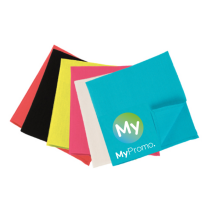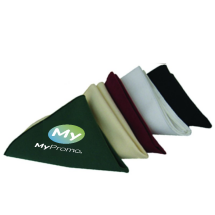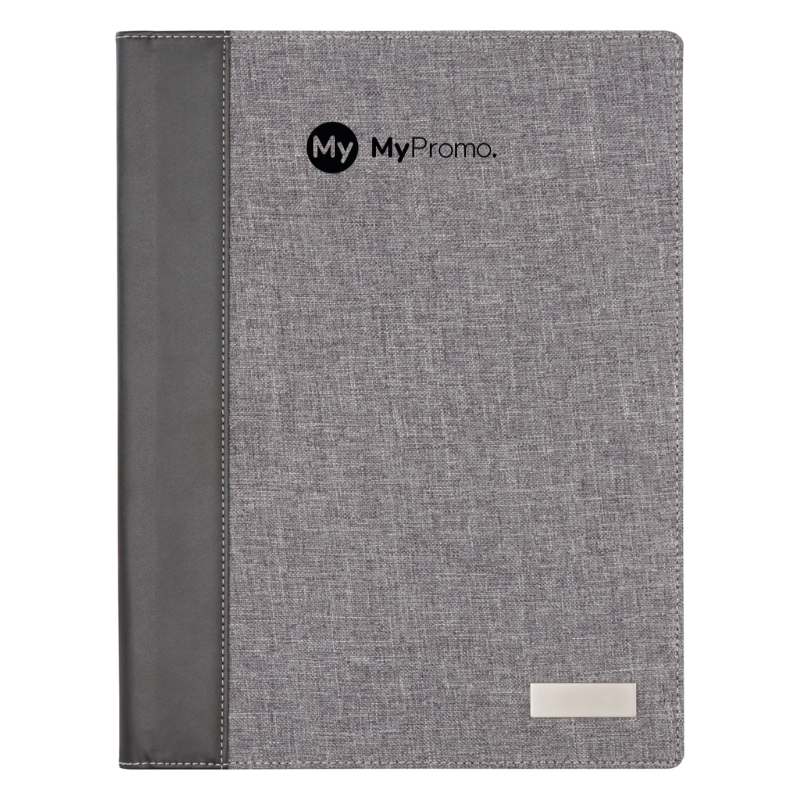Linen
What is Linen?
Linen is a natural textile made from the fibres of the flax plant. It is known for its strength, durability, and breathability, making it a popular choice in the manufacturing of various goods, including promotional items. Historically, linen has been used for thousands of years, with ancient Egyptians famously wrapping mummies in linen due to its preservative qualities.The process of producing linen begins with the cultivation of flax plants. Once harvested, the flax stalks are retted, a process that involves soaking them in water to loosen the fibres. After retting, the fibres are separated from the stalks through a process called scutching. The final step is spinning the fibres into yarn, which can then be woven into linen fabric.
Unique Properties and Characteristics
Linen is renowned for its distinctive properties, which include high tensile strength, excellent moisture absorption, and natural hypoallergenic qualities. These characteristics make linen not only durable but also comfortable to wear and use. Linen fabric is also highly breathable, which helps regulate temperature, making it ideal for clothing and home textiles.
Common Applications and Examples
Linen is used in a wide range of products due to its versatility and strength. Common applications include clothing items like shirts, trousers, and dresses, as well as household textiles such as tablecloths, napkins, and bed linens. In the realm of promotional products, linen is often used to create personalised items like tote bags, handkerchiefs, and aprons. These products are valued for their durability and the high-quality feel they offer, which can enhance a brand's image.
Advantages of Linen in Manufacturing
One of the primary advantages of linen is its strength; it is one of the strongest natural fibres available. This strength translates to long-lasting products that maintain their shape and integrity over time. Additionally, linen's natural moisture-wicking abilities keep it feeling dry and fresh, even in humid conditions. Its hypoallergenic nature also makes it suitable for people with sensitive skin.
Comparing Linen to Other Materials
When compared to other materials like cotton or polyester, linen stands out for its superior durability and breathability. Cotton is softer but less durable, while polyester lacks the natural qualities of breathability and comfort found in linen. However, linen can wrinkle more easily and may require more care in washing and ironing, which could be considered a disadvantage compared to the lower-maintenance polyester.
Addressing Challenges and Limitations
While linen offers many benefits, there are some challenges associated with its use. The tendency to wrinkle is one of the main limitations, which might be inconvenient for some users. Additionally, linen production can be labour-intensive and time-consuming, potentially leading to higher costs. Despite these challenges, the unique qualities of linen often outweigh these drawbacks, making it a preferred material for many manufacturers.
In conclusion, linen's exceptional properties and versatility make it a valuable material in the manufacturing industry, particularly for promotional items. Its historical significance and natural advantages continue to make it a sought-after textile in modern times.
| Property | Linen | Cotton | Polyester |
|---|---|---|---|
| Strength | High | Moderate | High |
| Durability | Very Durable | Durable | Very Durable |
| Breathability | Excellent | Good | Poor |
| Moisture Absorption | Excellent | Good | Poor |
| Hypoallergenic | Yes | Yes | No |
| Wrinkle Resistance | Low | Moderate | High |
| Care Requirements | Moderate to High (requires ironing) | Moderate (easy to care for) | Low (easy to care for) |
| Comfort | High (softens with use) | High (soft and comfortable) | Moderate (less comfortable) |
| Environmental Impact | Low (biodegradable, less water use) | Moderate (biodegradable, water-intensive) | High (non-biodegradable, derived from petroleum) |
What is linen made from?
Linen is made from the fibres of the flax plant. The process involves harvesting the flax plants, retting the stalks to loosen the fibres, separating the fibres through scutching, and spinning them into yarn which is then woven into fabric.
Why is linen considered a durable fabric?
Linen is considered durable because it has high tensile strength, making it one of the strongest natural fibres. This strength allows linen products to maintain their shape and integrity over time, even with regular use.
How does linen compare to cotton in terms of breathability?
Linen is more breathable than cotton. Its natural fibre structure allows for better airflow, which helps regulate temperature and keeps the fabric cool and dry, making it ideal for warm weather clothing and bedding.
What are the care instructions for linen garments?
Linen garments can be machine washed in cold water on a gentle cycle. It is best to avoid bleach and to use mild detergents. Linen should be air-dried or tumble-dried on low heat. Ironing linen while it is still slightly damp can help achieve a smooth finish, although many people prefer the natural, slightly wrinkled look of linen.
What are the environmental benefits of using linen?
Linen is an environmentally friendly fabric. Flax, the plant from which linen is made, requires fewer pesticides and less water to grow compared to cotton. Linen is also biodegradable and has a lower environmental impact during its production process, making it a sustainable choice for eco-conscious consumers.



